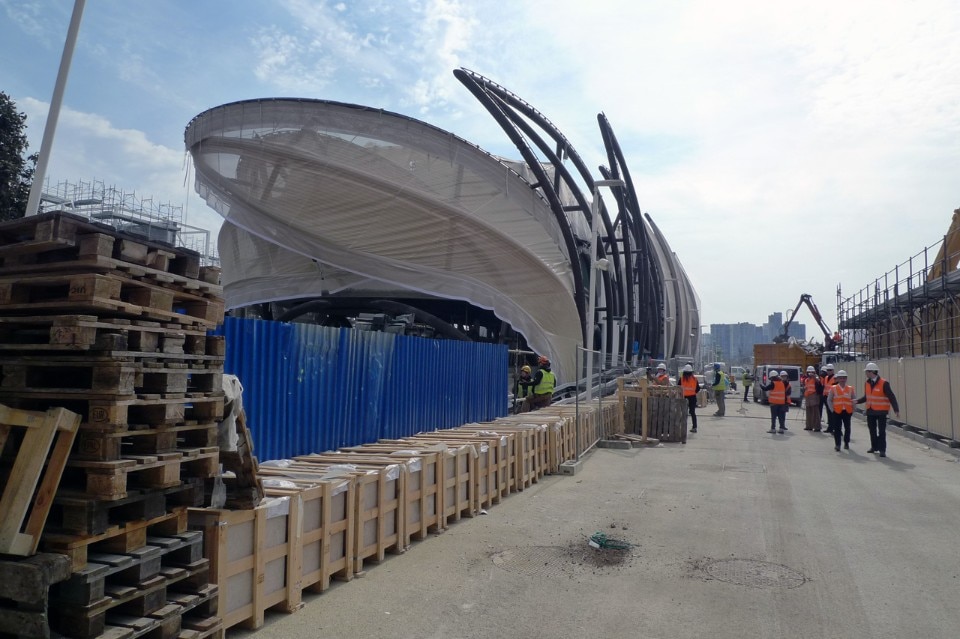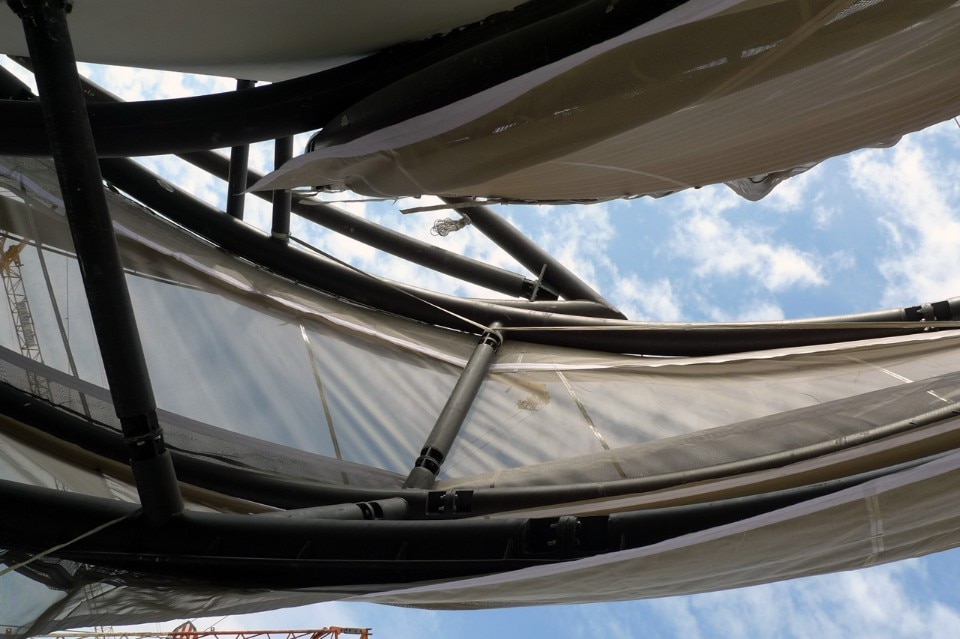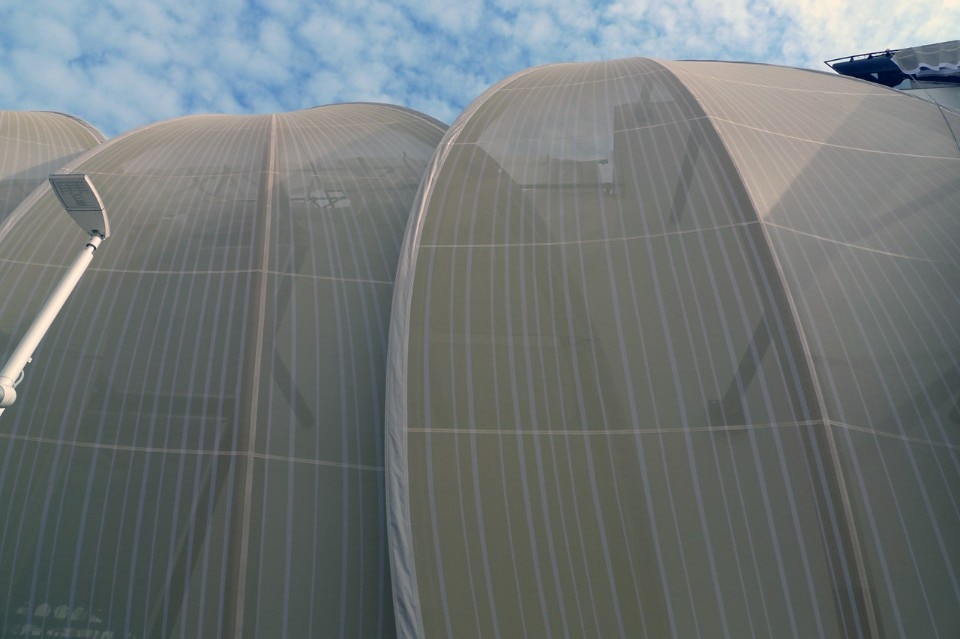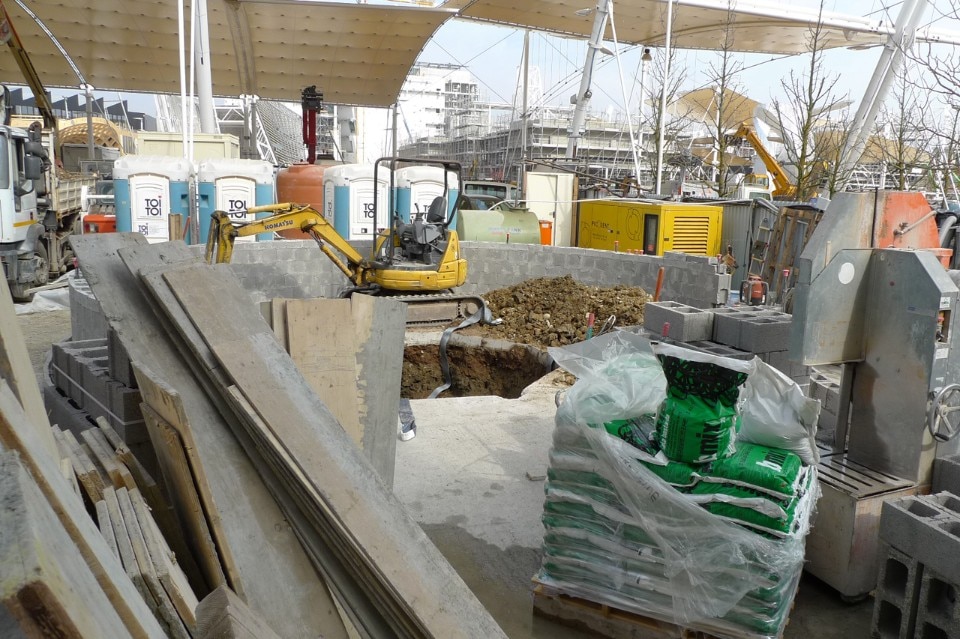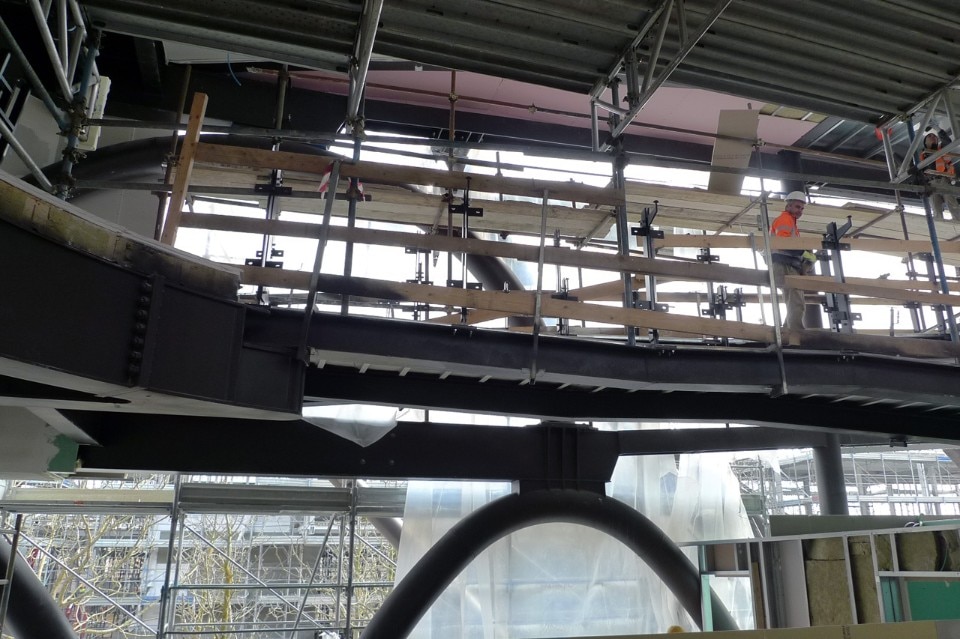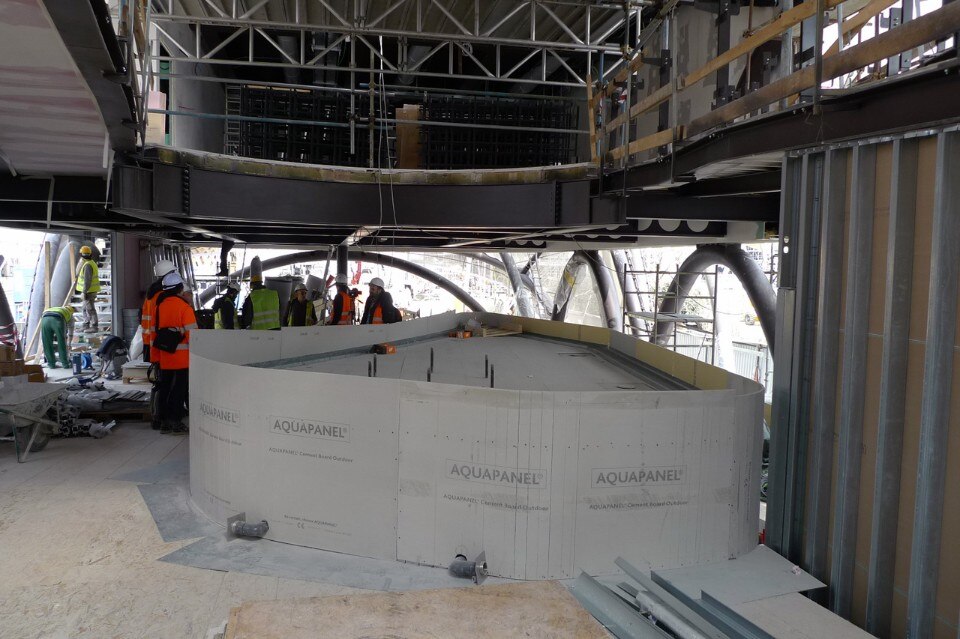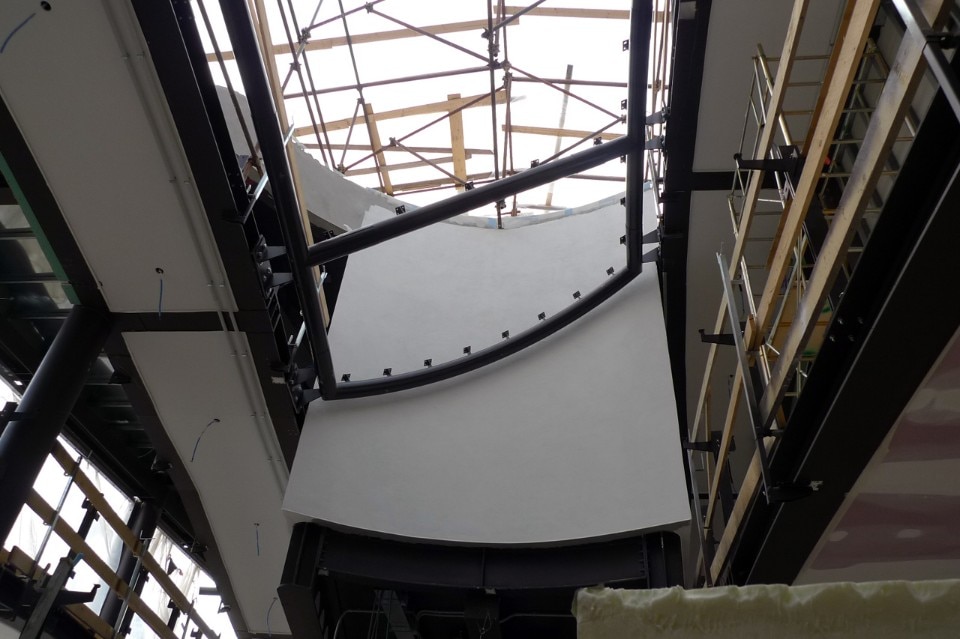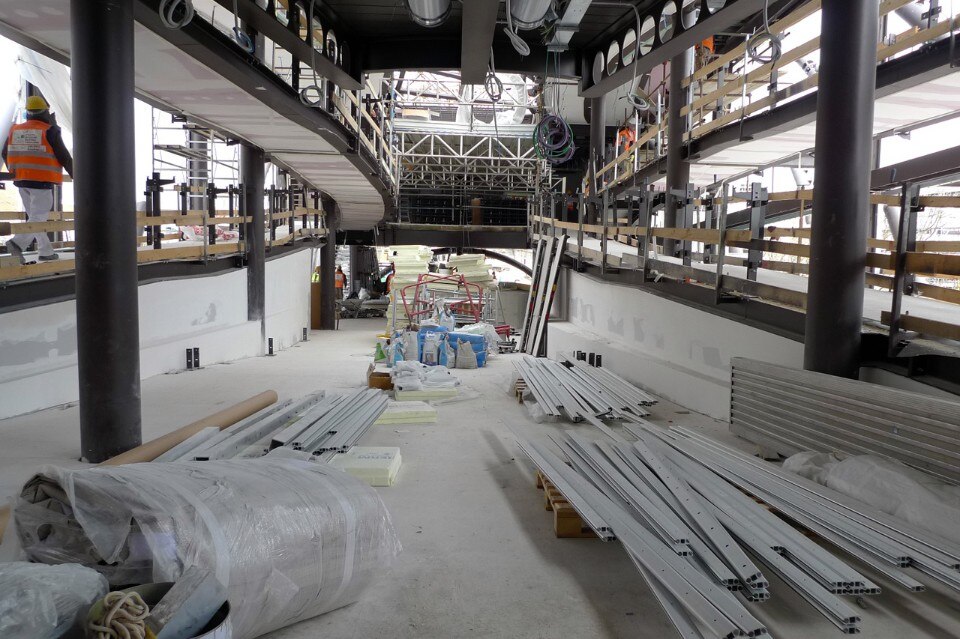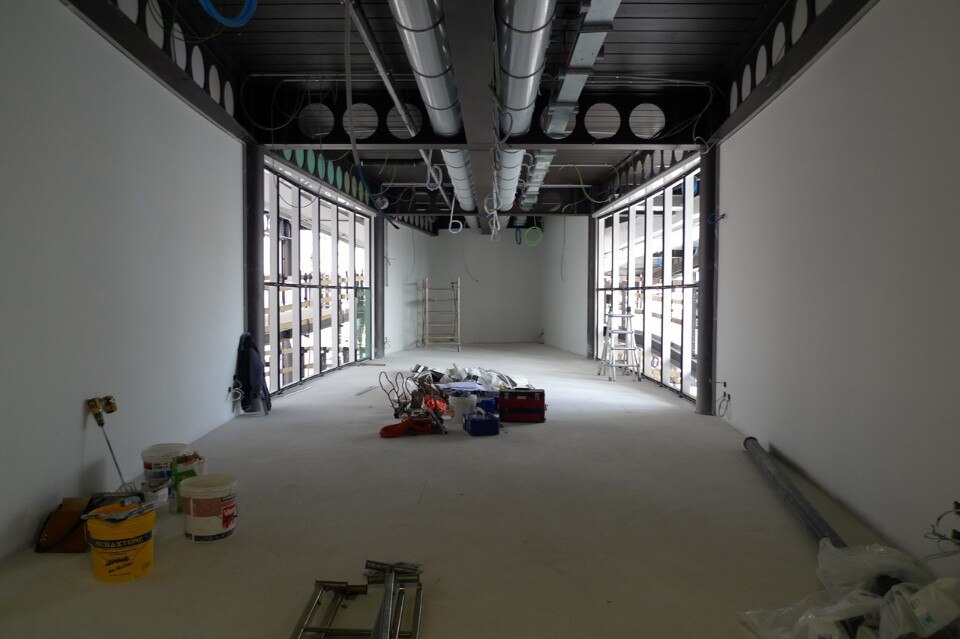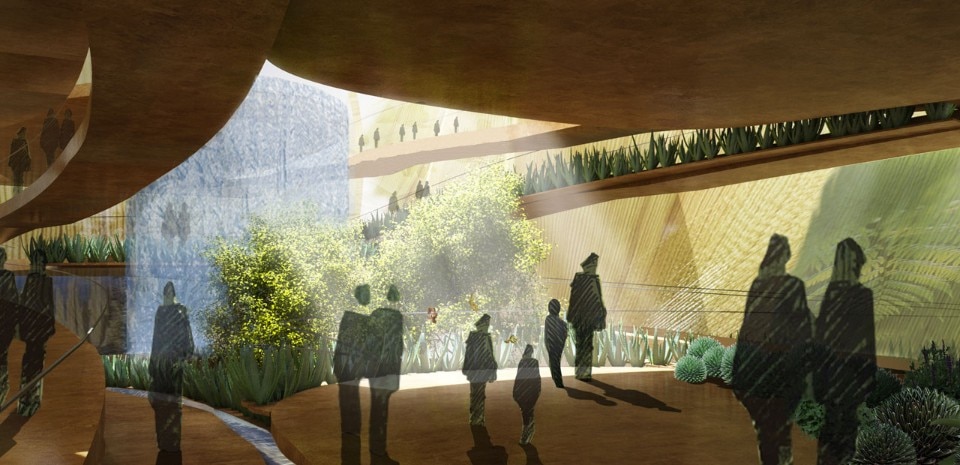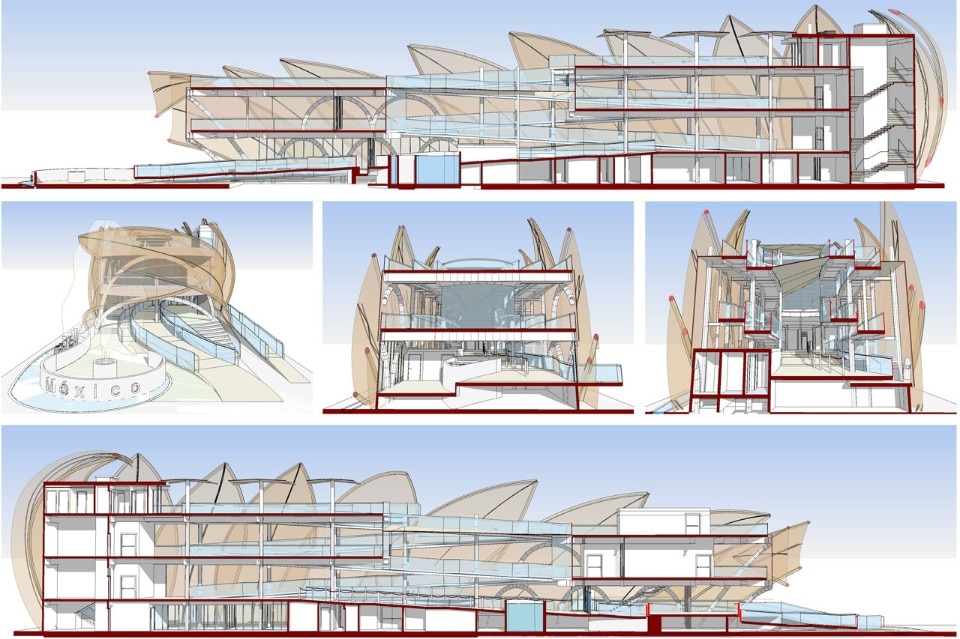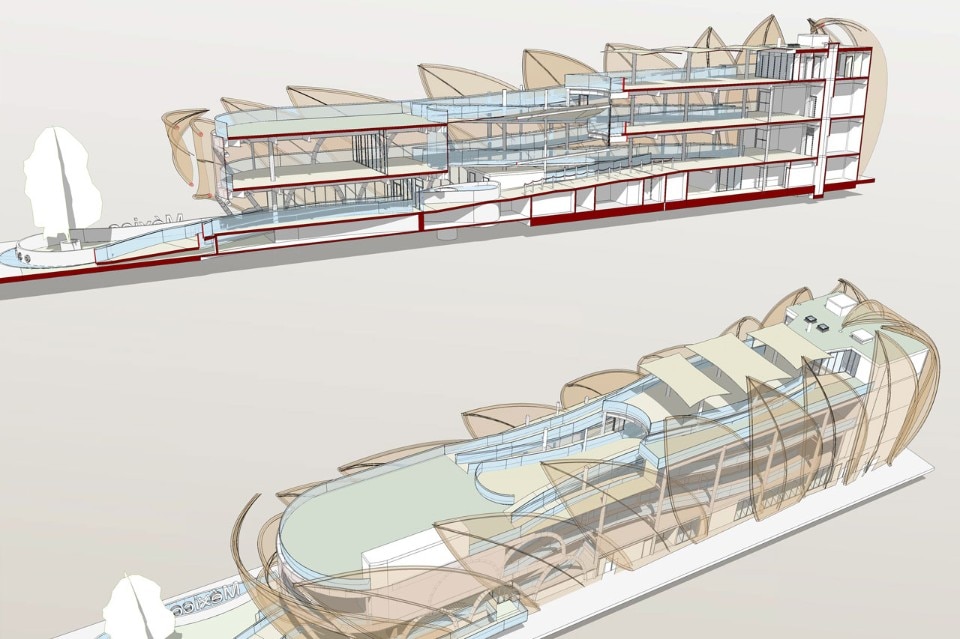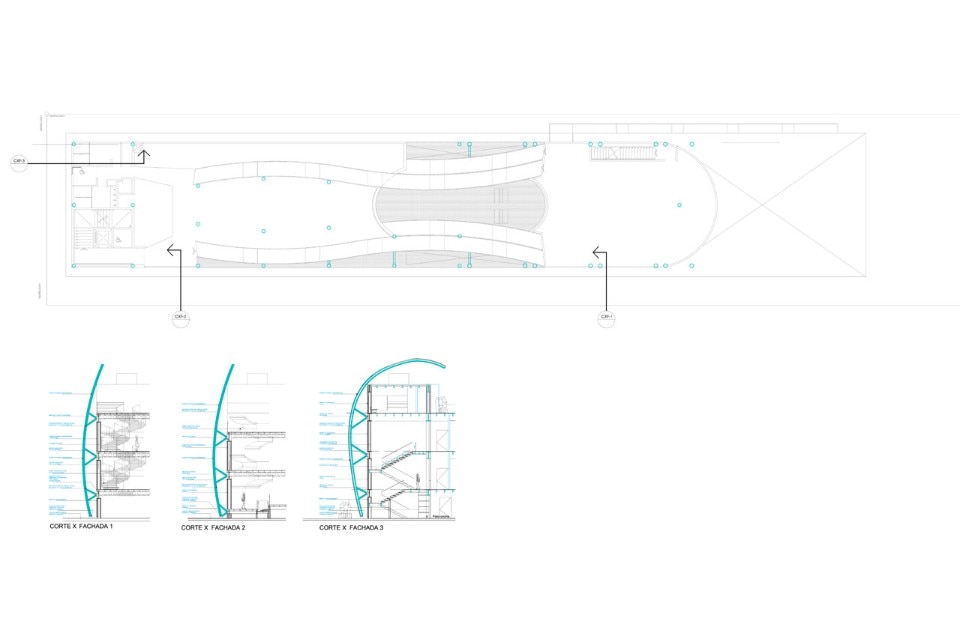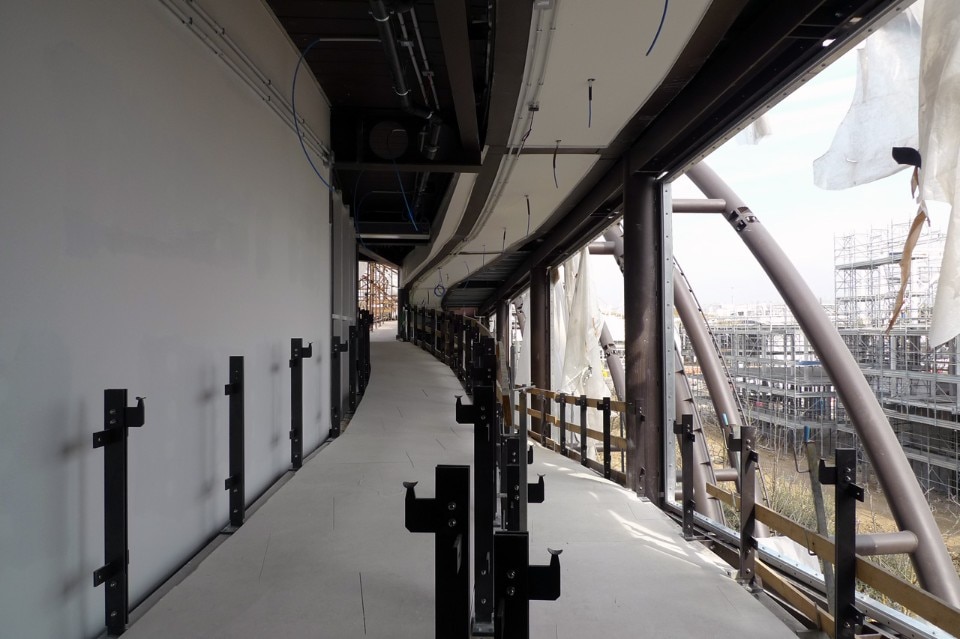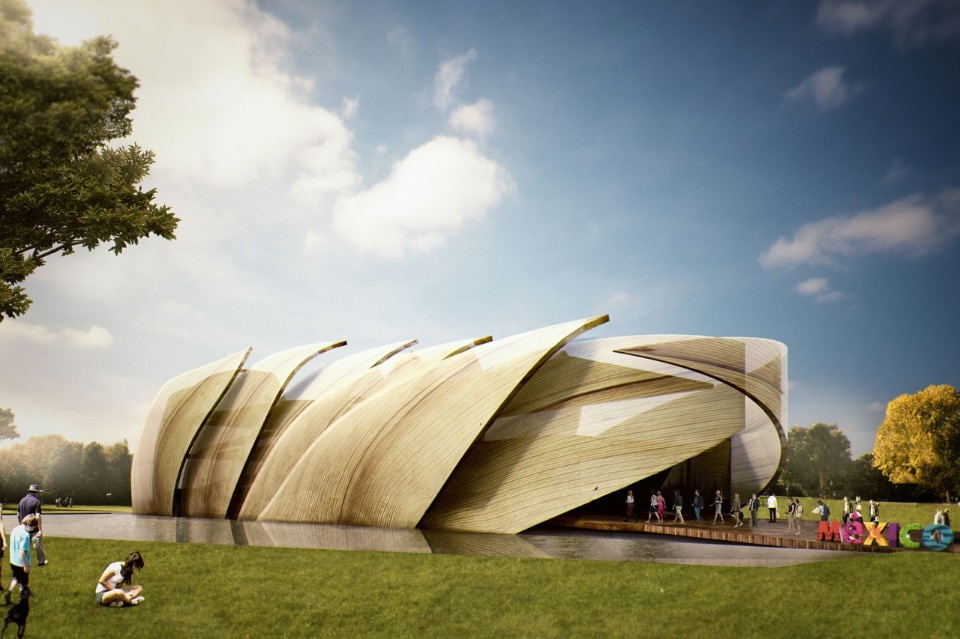
The idea for designing the pavilion interior was inspired by the integral handling system of the Mexico Basin used during the hydraulic-agricultural empire of King Nezahualcoyotl. In terms of sustainability, such a system was a major achievement because it let people of those times make the most of their natural surroundings without deteriorating them.
The pure water of the perennial springs of the high mountains was channelled through terraces and level curves, descending slowly through the slope, irrigating and covering vast tracts of land to grow a great diversity of foods, until flowing to the lakes. Inside the pavilion, both the natural environment of the Mexico Basin and this farming method are emulated: a system of ramps, platforms and heights reproduce the level curves and the old farming terraces, thus generating the different museographic areas. Water is born from the highest part of the pavilion; it falls in its center, giving life to an interior garden. Outside, a water mirror reflects the skin of the facade.
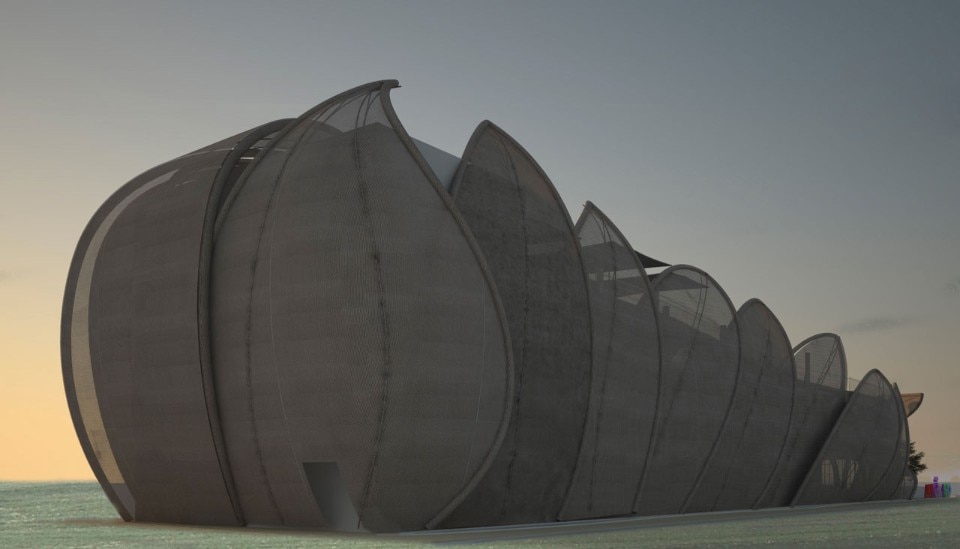
Always in tune with the message of the Expo, this pavilion prioritizes green areas. Since the very beginning and along the journey, contemplative gardens will be found by the ramps and terraces and their presence in the center of the place will be highlighted. Their purpose is to serve as havens, putting the visitors in touch with the diversity of Mexican flora.
On the rooftop of the pavilion there will be a vegetable garden with: quintoniles, chili, amaranth, chía, quelites, squashes… among other products that show the sustainable resources of our land, which form part of our diet and give flavour to our cuisine. Visitors can interact in the gardens, plant and harvest.
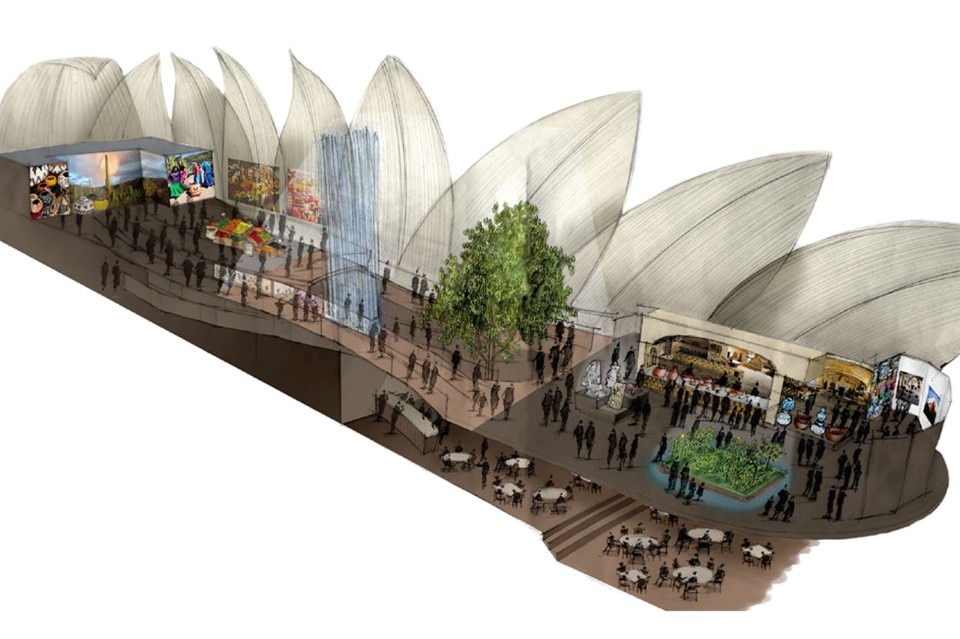
The design of this pavilion follows the principle of sustainability according to the short lifetime of the Expo. With this in mind, we suggest an architecture that is ephemeral, light, easy for construction and disassembly, so that it allows the possibility of being reused. With this, a reduction in cost and time will be achieved.
Aware of the massive flow of people during peak hours, the design of the circulation guarantees the most efficient attention to the largest number of people. We propose a linear tour through ramps that connect with levels and half levels, which will result in a dynamic flow. This will make circulation easier for disabled visitors. The rising ramp leads to the rooftop. The restaurant and an urban garden are located on it and from this point we get a vista of the inside of the pavilion: the “expository terraces” system, the waterfall and the entry of sunlight towards the central vegetation area. From the last level, you can access the descending ramp that leads to the store, favouring the advertising of Mexican products.
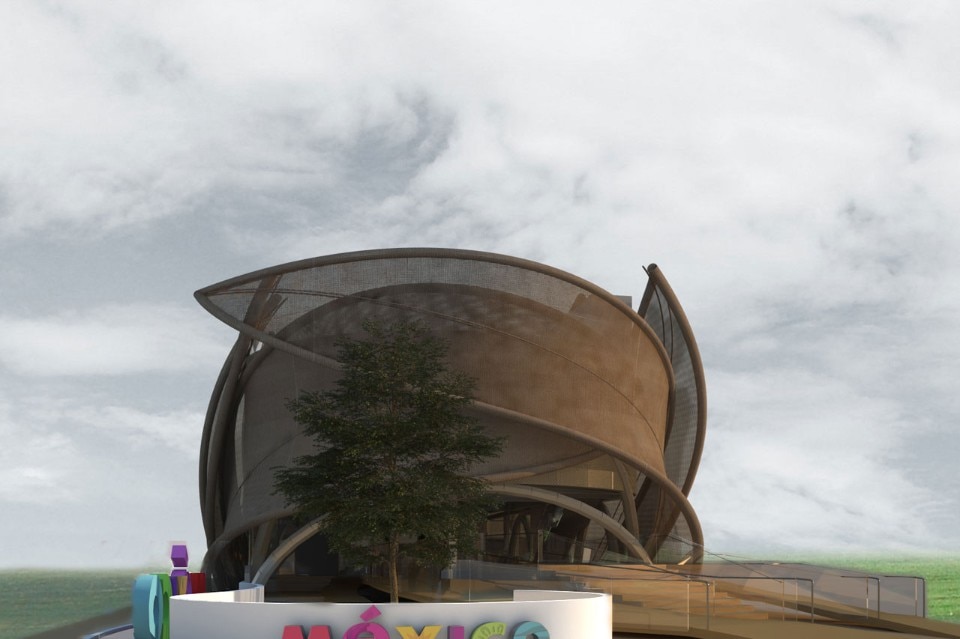
 View gallery
View gallery
Mexico Pavilion
Architect: Francisco López Guerra Almada
Team: Xavier Prieto, José Pablo Ballesteros, Jorge Borbolla, Roberto Gatica, Santiago Letona, Helena Melgar
Museum Planner and Designer: Georgina Larrea
Interior Designer: Francisco Uribe
Graphic Designer: Elizabeth Bandala, Isabel Hinojosa
Writer: Leonardo Fernández Borja
Land area: 1910 sqm
Footprint construction area: 1070 sqm
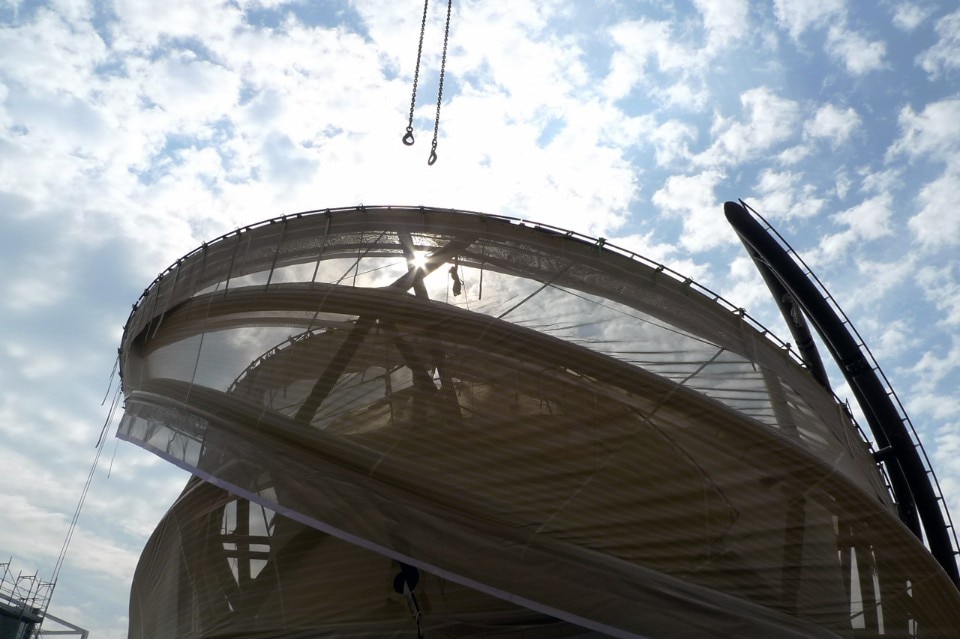
 View gallery
View gallery

